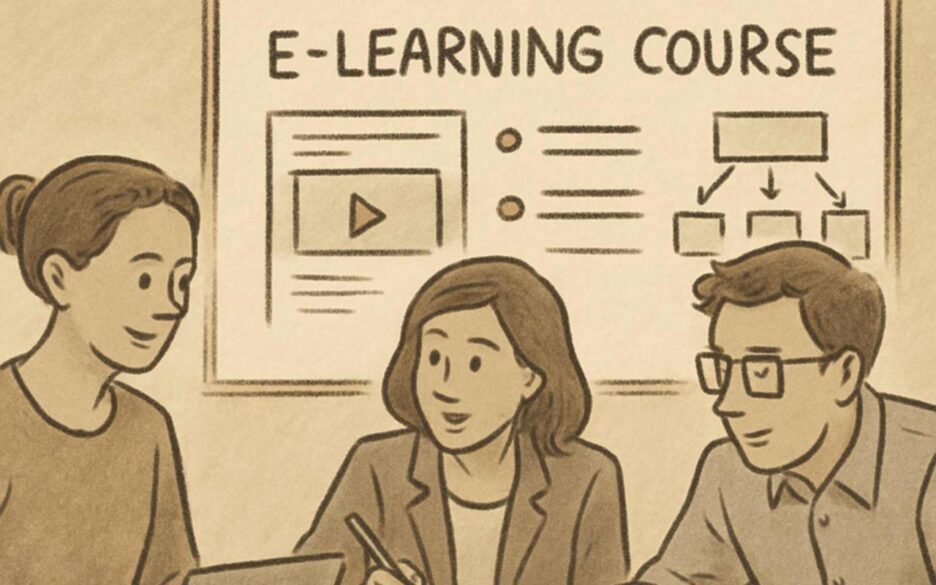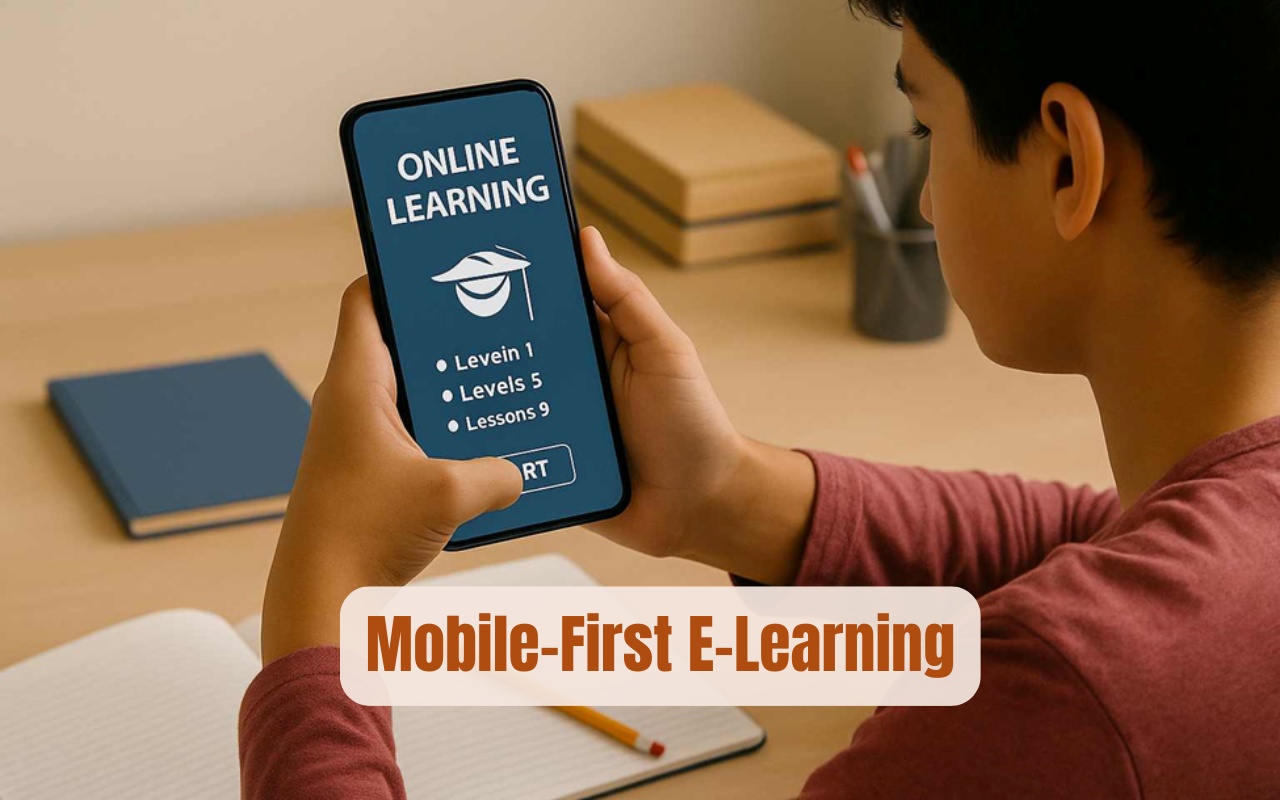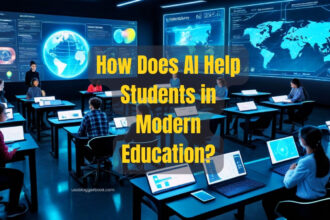In an era where the digital landscape is continuously evolving, the demand for eLearning solutions (Mobile-First E-Learning) has skyrocketed, especially with the proliferation of mobile devices. The modern learner seeks flexibility, accessibility, and content that is both engaging and informative.
This shift has led to the emergence of mobile-first e-learning, a paradigm that prioritizes mobile learning platforms to deliver education in bite-sized modules, commonly known as microlearning. As educational needs shift, the adoption of mobile-first strategies is not just a convenience but a necessity for staying relevant and impactful.
This article delves into the intricacies of designing mobile-first e-learning courses, highlighting the importance of microlearning on the go, and how these concepts can be harnessed effectively. We will explore the rise of mobile-first e-learning, delve into the benefits of microlearning, and discuss the challenges and future of this innovative learning approach.
By understanding these dynamics, educators and institutions can better cater to the needs of the modern learner, ensuring that education is accessible, engaging, and effective.
How Mobile-First E-Learning is Shaping Modern Education
The mobile-first approach in e-learning is a strategic decision to design educational content primarily for mobile devices. This shift is driven by the ubiquitous nature of smartphones and tablets, which allow learners to access content anytime and anywhere.
The convenience of having a virtual classroom in one’s pocket means that learning can happen spontaneously, whether it’s during a commute, a lunch break, or any moment of downtime. This capability makes mobile-first learning an ideal solution for today’s fast-paced world, where time is often scarce.
Furthermore, the mobile-first approach is not just about accessibility but also about transforming the learning experience. By leveraging the inherent functionalities of mobile devices, such as touch screens, cameras, and GPS, educators can create more interactive and immersive learning experiences.
This not only keeps learners engaged but also enhances comprehension by connecting theoretical knowledge with practical applications. The adaptability of mobile platforms ensures that content remains relevant and responsive to the evolving demands of learners.
Why Mobile Learning?
Mobile learning offers unparalleled flexibility and accessibility. It caters to the modern learner’s desire for on-the-go education, allowing them to integrate learning seamlessly into their daily routine. This flexibility is particularly beneficial for adult learners who are balancing education with work and personal responsibilities.
Moreover, mobile learning platforms are designed to be user-friendly, with intuitive interfaces that enhance the overall learning experience. The ease of use ensures that learners can focus on acquiring knowledge rather than navigating complex systems.
Additionally, mobile learning supports diverse learning preferences and styles. With the ability to incorporate multimedia elements like videos, podcasts, and interactive simulations, learners can choose the format that best suits their needs.
This variety not only makes learning more enjoyable but also more effective, as it allows learners to engage with content in multiple ways. Ultimately, mobile learning is about empowering learners, giving them control over their educational journey and facilitating lifelong learning.
Understanding Microlearning | Mobile-First E-Learning
Microlearning is a method of delivering educational content in small, focused units. This approach aligns perfectly with the mobile-first strategy, as it caters to the limited attention span and busy schedules of modern learners.
By breaking down complex topics into manageable segments, microlearning makes it easier for learners to absorb and retain information. This methodology is particularly effective in addressing the cognitive overload that often accompanies traditional learning formats.
Moreover, microlearning supports continuous learning by encouraging learners to engage with content regularly. This ongoing engagement helps to reinforce knowledge and build competencies over time.
In corporate settings, microlearning is often used for just-in-time training, providing employees with the skills they need precisely when they need them. This immediacy not only enhances learning outcomes but also boosts productivity and performance.
Benefits of Microlearning
- Enhanced Retention: Microlearning segments information into manageable chunks, which aids in better comprehension and retention. The bite-sized nature of microlearning allows learners to focus on one concept at a time, reducing the likelihood of information overload. This focused approach makes it easier for learners to internalize knowledge and apply it in real-world scenarios.
- Increased Engagement: Short, targeted modules keep learners engaged, reducing cognitive overload and promoting active learning. The concise format of microlearning also allows learners to see immediate progress, which can be highly motivating. This sense of achievement fosters a positive learning experience and encourages continued participation.
- Flexibility: Learners can consume microlearning content at their own pace, revisiting modules as needed to reinforce understanding. This self-directed approach empowers learners to take control of their education, choosing when and how to engage with content. The ability to revisit materials ensures that learning is reinforced and retained over time, supporting long-term knowledge acquisition.
Designing Effective Mobile-First E-Learning Courses
Creating an effective mobile-first e-learning course requires careful planning and execution. Here are some key considerations for designing courses that resonate with learners. The design process should focus on creating an intuitive and engaging experience that aligns with learners’ needs and preferences.
By prioritizing user experience, leveraging technology, and incorporating elements of gamification, educators can create courses that are not only educational but also enjoyable.
Prioritize User Experience
The success of a mobile-first e-learning course hinges on the user experience. It is crucial to design intuitive and responsive interfaces that facilitate easy navigation and interaction. A seamless user experience encourages learners to engage with content without frustration, enhancing their overall satisfaction and learning outcomes.
Utilizing multimedia elements like videos, infographics, and interactive quizzes can enrich the learning experience and cater to different learning styles. These elements not only make learning more dynamic but also cater to visual, auditory, and kinesthetic learners.
Moreover, accessibility should be a key consideration in the design process. Ensuring that content is accessible to learners with disabilities is essential for creating an inclusive learning environment.
This includes providing alternative text for images, captions for videos, and ensuring that all interactive elements are keyboard navigable. By prioritizing accessibility, educators can ensure that all learners have equal opportunities to succeed.
Leverage Adaptive Learning Technologies
Adaptive learning technologies personalize the learning experience by analyzing learner behavior and adjusting content accordingly. This ensures that learners receive the right level of challenge and support, optimizing their learning journey.
By tailoring content to individual needs, adaptive learning technologies can enhance engagement and improve learning outcomes. This personalized approach helps learners to progress at their own pace, building confidence and competence over time.
Additionally, adaptive learning technologies can provide valuable insights into learner performance and preferences. By analyzing data on learner interactions, educators can identify areas where learners may be struggling and provide targeted support.
This data-driven approach not only improves the learning experience but also informs future course design, ensuring that content remains relevant and effective.
Incorporate Gamification Elements
Gamification is a powerful tool to increase engagement and motivation in e-learning. By incorporating elements like leaderboards, badges, and rewards, learners are incentivized to complete modules and achieve learning milestones.
This competitive element can make learning more enjoyable and encourage learners to persist in their studies. Gamification taps into the natural human desire for achievement and recognition, making learning an exciting and rewarding experience.
Moreover, gamification can foster a sense of community and collaboration among learners. By incorporating social elements, such as group challenges and collaborative projects, learners can connect with peers and share their achievements.
This social interaction not only enhances motivation but also supports collaborative learning, helping learners to develop critical thinking and problem-solving skills.
Challenges and Solutions in Mobile-First E-Learning

While mobile-first e-learning offers numerous benefits, it also presents unique challenges. Here, we explore common obstacles and potential solutions. Addressing these challenges is essential for creating a successful mobile-first learning experience that meets the needs of all learners.
By understanding and mitigating these challenges, educators can ensure that mobile-first e-learning remains an effective and sustainable educational approach.
Content Accessibility and Compatibility
Ensuring that content is accessible across various devices and operating systems is crucial. Utilizing responsive design principles and testing courses on different platforms can mitigate compatibility issues and ensure a seamless learning experience for all users.
This adaptability ensures that learners can access content regardless of their device, making learning more inclusive and accessible. By prioritizing compatibility, educators can reach a wider audience and provide a consistent learning experience for all learners.
Additionally, educators must consider the varying levels of internet connectivity among learners. Providing offline access to content can be a valuable solution for learners in areas with limited internet access.
By offering downloadable materials and offline activities, educators can ensure that all learners have the opportunity to engage with content, regardless of their connectivity status.
Maintaining Learner Engagement
Keeping learners engaged in a mobile-first environment can be challenging due to distractions and shorter attention spans. To combat this, courses should be designed with interactive elements and regular assessments that encourage active participation and self-reflection.
Interactive quizzes, discussion forums, and real-world case studies can help to maintain engagement and promote critical thinking. By creating opportunities for interaction and reflection, educators can encourage learners to take an active role in their education.
Moreover, providing regular feedback is essential for maintaining learner engagement. Timely and constructive feedback helps learners to understand their progress and identify areas for improvement.
By fostering a supportive learning environment, educators can motivate learners to persist in their studies and achieve their educational goals.
Data Privacy and Security
With mobile learning, data privacy and security become paramount. Institutions must implement robust security measures to protect learner information and ensure compliance with relevant regulations.
This includes encrypting data, securing user access, and regularly updating security protocols to address emerging threats. By prioritizing data privacy and security, educators can build trust with learners and create a safe learning environment.
Furthermore, transparency in data collection and usage is crucial for maintaining learner trust. Institutions should communicate clearly with learners about what data is being collected, how it will be used, and the measures in place to protect their privacy. By fostering transparency, educators can ensure that learners feel confident and secure in their educational experience.
The Future of Mobile-First E-Learning
As technology continues to evolve, so too will the landscape of mobile-first e-learning. Advancements in artificial intelligence, augmented reality, and virtual reality hold the potential to revolutionize the way educational content is delivered and consumed. These technologies can create immersive learning environments that enhance engagement and facilitate deeper understanding.
By providing learners with hands-on experiences and real-world simulations, educators can bridge the gap between theory and practice, making learning more relevant and impactful.
Moreover, the ongoing development of mobile learning platforms will likely lead to more personalized and adaptive learning experiences, further bridging the gap between traditional and digital education. As platforms become more sophisticated, they will be able to analyze learner data in real-time, providing tailored content that meets individual needs and preferences.
This personalized approach will not only enhance learning outcomes but also support lifelong learning by empowering learners to take control of their educational journey.
In addition, the integration of social learning features will continue to play a significant role in the future of mobile-first e-learning. By facilitating collaboration and communication among learners, social learning features can enhance engagement and foster a sense of community.
As learners connect with peers and share their experiences, they can develop valuable skills such as teamwork, communication, and problem-solving, preparing them for success in the modern world.
Conclusion
Mobile-first e-learning is more than just a trend; it’s a transformative approach that meets the needs of modern learners. By embracing microlearning and leveraging the power of mobile technology, educational institutions and businesses can offer flexible, engaging, and effective learning experiences.
As the digital landscape continues to evolve, mobile-first e-learning will undoubtedly play a pivotal role in shaping the future of education. This approach not only addresses the challenges of traditional education but also opens up new opportunities for innovation and growth.
In conclusion, the success of mobile-first e-learning depends on the ability of educators and institutions to adapt and innovate. By prioritizing user experience, leveraging technology, and addressing challenges, they can create learning experiences that are not only effective but also enjoyable.
As we look to the future, mobile-first e-learning will continue to evolve and adapt, providing learners with the tools and opportunities they need to succeed in an ever-changing world.





